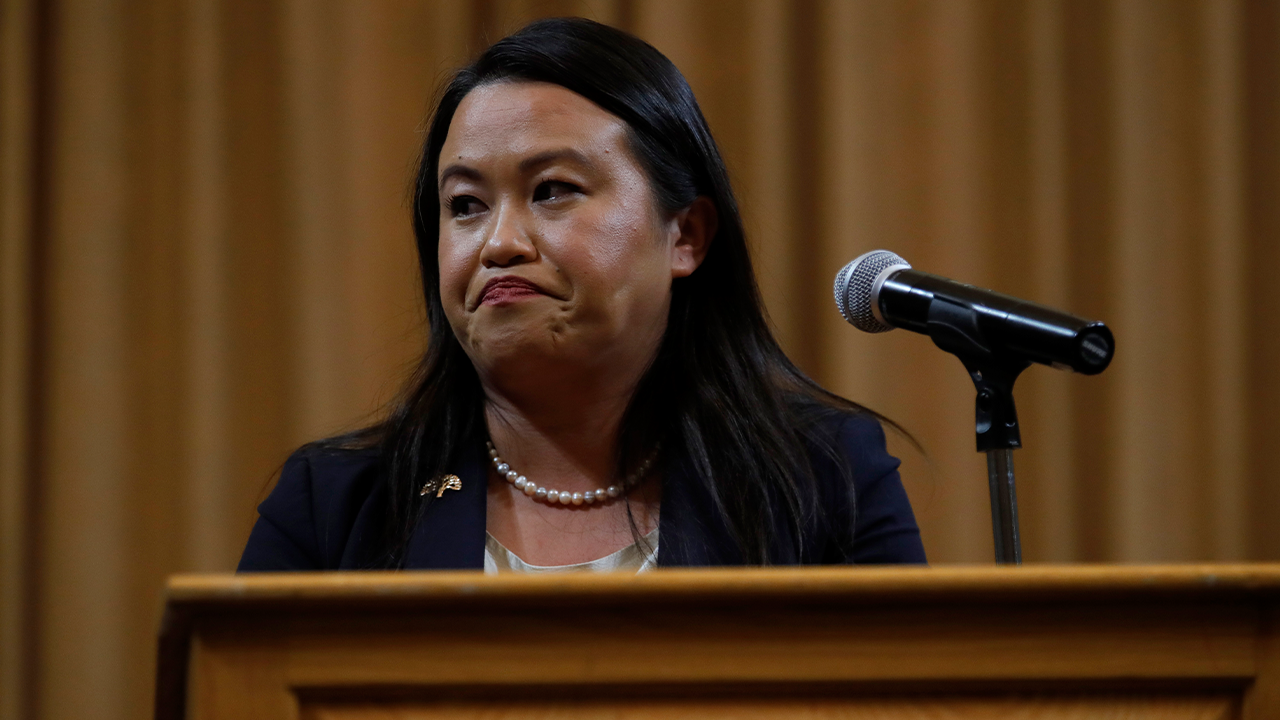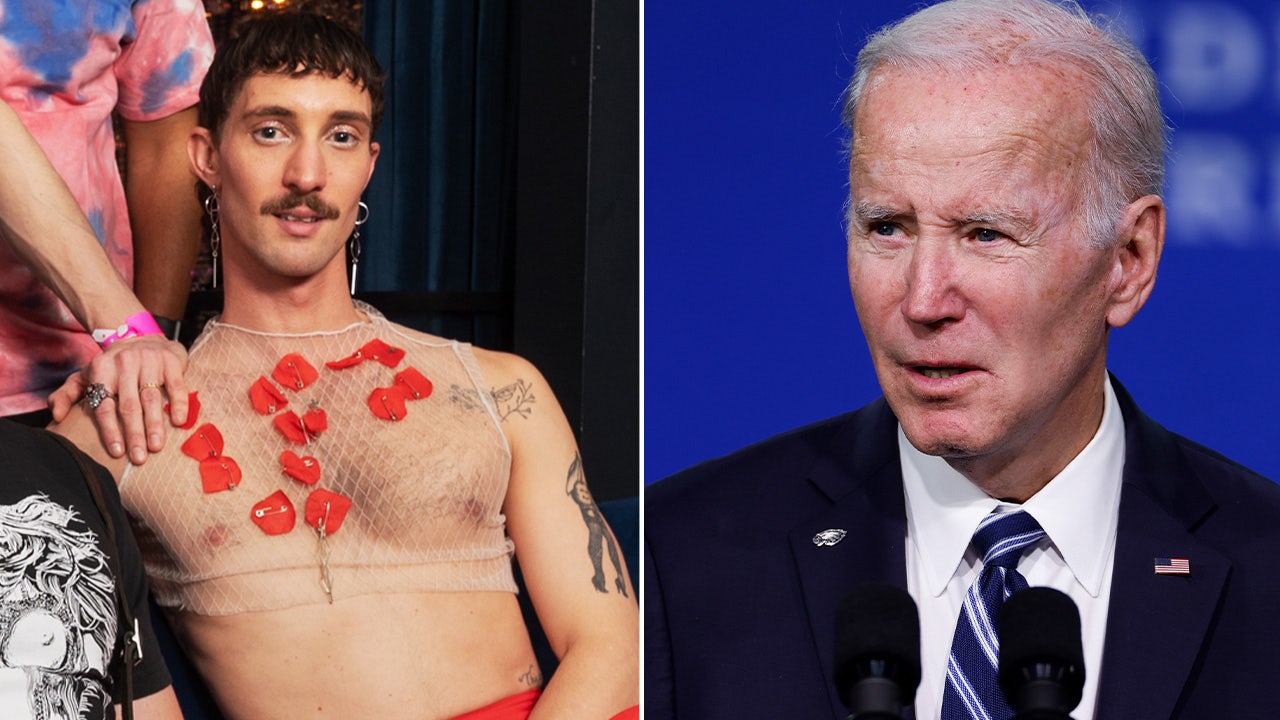West Virginia
Judge Kleeh named West Virginia Bar Foundation Fellow

West Virginia
West Virginia Permanently Bars Failed Microschool from Receiving State Funds

Get stories like these delivered straight to your inbox. Sign up for The 74 Newsletter
West Virginia officials have permanently barred a failed microschool that one parent described as a “glorified babysitter” from participating in the state’s Hope Scholarship private school choice program.
In a decision last week, the Hope Scholarship Board also directed state Treasurer Riley Moore’s office, which runs the program, to turn their findings over to the state auditor for possible criminal charges.
The 74 first reported in March that Hive Learning Academy, an education startup operating out of a rented house, was part of a state investigation into scholarship violations. One parent said the school abruptly stopped serving his son’s age group after only three days, made no mention of a refund and didn’t answer questions. Another said there were no set meal times and students just grabbed their lunches from the refrigerator. Parents alerted officials to the problems, but Kaela Zimmerman, the homeschool parent who opened the program, said the state bears some responsibility.
“I feel like they are trying to make an example out of us to set a precedent even though the system truly failed us last year,” she told The 74. She added that she had no plans to reopen anyway. “It was a learning process for everyone. I wish they were willing to admit that and understand that we all did the best we could with the resources we had at the time.”
While the Martinsburg-based school ultimately served just eight students, the controversy raised larger questions nationwide about the expertise of those who start schools with public funds. Critics of such programs, known as education savings accounts, say there is a lack of sufficient oversight and that students suffer when programs abruptly close. But school choice supporters used the school’s failure to argue that market-based approaches like those inWest Virginia work.
“This is the flashpoint for the conversation about what is accountability with education savings accounts,” said Michael Horn, co-founder of the Clayton Christensen Institute for Disruptive Innovation, a nonprofit think tank. He led a session on the topic at a conference in April and said drawing attention to problems and solutions will make programs better.
Don Soifer, who leads the National Microschooling Center, an advocacy group, noted that West Virginia lawmakers voted last year to allow families to spend ESA funds at microschools, but didn’t follow up with clear guidance on how the unconventional programs could participate.
“West Virginia simply had not anticipated a microschooling movement, and government was slow to respond,” he said. While the requirements on school founders are minimal — they must subject staff to criminal background checks and notify districts when students enroll — Soifer said there’s increased awareness in the state about the small programs. “Things seem a whole lot better now. But the start was tricky.”
‘Everything was returned’
Launching the Hive was a greater risk than Zimmerman anticipated. She and a business partner opened the program last August and, lacking sufficient startup funds, dipped into their own money for furniture and supplies. Parents quickly spotted signs of trouble. The school’s schedule was inconsistent as operators worked other jobs to pay bills. Parents who visited the schools saw little evidence of academic work.
Ultimately, Zimmerman repaid the state over $15,000 and said she doesn’t understand why officials say she could face criminal charges.
“Everything was returned that needed to be returned,” she said. “No one from the Hope board has reached out to me a single time since they received our refunds.”
Jared Hunt, spokesman for the treasurer’s office, said the board sent Zimmerman notice of the official action and information on how to appeal. But he declined to answer additional questions due to the ongoing investigation.
To observers like Horn, the episode prompts additional questions for both parents and entrepreneurs seeking to open microschools.
“We’re in an environment where you’re seeing so many different microschools pop up with so many educators of different stripes starting them,” he said. “What’s the role of the state? What’s the role of parents? What’s the role of marketplaces in which students and families are making choices?”
Get stories like these delivered straight to your inbox. Sign up for The 74 Newsletter
West Virginia
How much money do you need to make to be in the top 5% in West Virginia?

(NEXSTAR) – The disparity between the income that an average U.S. resident brings in yearly compared to those sitting at the top of earners in each state has always been a major topic of discussion.
In fact, WalletHub states that “the highest-earning 10% of individuals in the United States earn over 12 times more than those in the lowest-earning 10%, based on the latest Census data.”
And while looking up what the “average salary” is across the country, ($74,600, according to the latest data from the Federal Reserve), appears to give a solid idea of how far off most Americans are from the 5% club, a closer look at the high-end salaries reveals that the disparity is even more stark.
WalletHub broke down the income of all 50 U.S. states and Washington D.C into three different groups: the average annual income of the top 5%, the average for the bottom 20%, and the median for all of each state’s residents.
Landing at No. 1 was New York where the top 5% makes about $553,000 a year. That’s almost $35,000 more than the next two highest states and nearly $100,000 more than the 10th-ranked state.
While the top 5% is thriving in the Empire State, its bottom 20% is falling well short, ranking 44th in salary with $13,301.
Right behind New York is Connecticut and Virginia where the average is about $518,000 apiece. Followed by New Jersey and Illinois which are both hovering around $505,000.
The state with the lowest top 5% threshold is Alaska, where earning roughly $321,000 will get you into the club. Hawaii and Vermont aren’t far behind where the top 5% makes about $334,000.
West Virginians will need to make $345,239 to be in the top 5%. Ohioans will need $436,922 and Kentuckians will need $411,897.
Check out what you need to make in your state:
Rank
State
Average Annual Income of Top 5%
Median Annual Income
Average Annual Income of Bottom 20%
1
New York
$553,436
$91,366
$13,301
2
Connecticut
$518,757
$114,156
$14,576
3
Virginia
$518,296
$89,393
$18,694
4
New Jersey
$505,621
$117,847
$16,445
5
Illinois
$504,800
$78,304
$16,192
6
Georgia
$487,870
$66,612
$16,472
7
Texas
$481,483
$70,513
$16,802
8
Washington
$474,067
$103,748
$18,223
9
Florida
$470,308
$68,818
$15,375
10
Massachusetts
$466,208
$127,760
$13,689
11
Minnesota
$464,981
$86,364
$19,797
12
Colorado
$456,603
$97,301
$18,451
13
California
$454,829
$123,988
$13,949
14
Tennessee
$453,539
$59,077
$15,679
15
District of Columbia
$450,892
$162,265
$9,011
16
North Carolina
$450,592
$63,025
$15,836
17
Utah
$448,195
$89,786
$22,491
18
Michigan
$446,114
$62,446
$17,019
19
Missouri
$446,069
$59,715
$16,821
20
Pennsylvania
$445,261
$74,711
$15,801
21
Ohio
$436,922
$61,904
$16,188
22
Maryland
$427,135
$124,693
$16,647
23
Arizona
$424,913
$74,375
$16,604
24
Kansas
$423,517
$68,489
$17,176
25
Nebraska
$416,325
$72,384
$17,380
26
Arkansas
$416,224
$51,032
$14,069
27
South Carolina
$412,771
$62,909
$13,996
28
Kentucky
$411,897
$55,629
$13,800
29
Oklahoma
$405,113
$57,215
$15,205
30
Idaho
$403,737
$70,041
$18,372
31
Delaware
$402,989
$87,173
$16,930
32
Wisconsin
$402,256
$72,602
$17,973
33
Nevada
$401,062
$80,366
$14,472
34
New Hampshire
$400,343
$110,205
$18,075
35
Indiana
$399,270
$64,170
$16,670
36
Alabama
$398,584
$55,480
$13,242
37
Montana
$395,720
$68,937
$15,337
38
Louisiana
$395,155
$56,282
$11,504
39
Iowa
$395,093
$68,974
$17,621
40
South Dakota
$393,809
$69,266
$17,252
41
North Dakota
$387,548
$79,874
$15,661
42
Wyoming
$387,280
$76,307
$16,199
43
Oregon
$377,399
$91,100
$14,720
44
Mississippi
$377,040
$46,880
$12,168
45
Rhode Island
$353,721
$104,252
$12,668
46
New Mexico
$351,972
$58,911
$11,944
47
West Virginia
$345,239
$52,719
$12,477
48
Maine
$338,866
$79,800
$13,749
49
Vermont
$334,470
$89,695
$14,477
50
Hawaii
$334,369
$141,832
$14,014
51
Alaska
$321,634
$113,934
$15,646
As for what state’s residents make the most money on average, Washington D.C. finished with the highest median income of $162,265. Unfortunately, D.C. also finished with the lowest salary for the average annual income of the bottom 20%, with $9,011.
Other states that had a high median income were Hawaii ($141,832), Massachusetts ($127,760), Maryland ($124,693), and California ($123,988).
These states with a smaller gap between the average earner and the top 5% make it easier to make the jump, but it’s still difficult.
According to GoBankingRates, it will take a variety of factors to make that jump. First, you need a steady increase in income. This could mean you are making better financial decisions, investing wisely, or perhaps experiencing career advancements.
Another factor is maybe having a solid investment strategy, look to see that you are getting positive returns on your investment and that you have a well-diversified portfolio.
Finally, prioritize your long-term financial stability. Look to prioritize saving over short-term pleasures.
And if you’re looking to go even higher than the top 5%, Forbes found that to be one of the top 1% of earners in the U.S., you need to bring in an annual salary of at least $597,815, so start saving up!
West Virginia
WVSports – West Virginia cultivates strategies, momentum in recruiting

It’s safe to say that West Virginia currently has momentum on the recruiting trail.
The Mountaineers have added eleven commitments since the start of June with the 2025 recruiting class currently perched inside the top 25 according to the Rivals.com national rankings. And while that can change in a flash, the work done to even get to that point doesn’t happen overnight.
-

 World1 week ago
World1 week agoSwitzerland's massive security effort at the Ukraine peace conference
-

 News1 week ago
News1 week agoJoe Biden, Barack Obama And Jimmy Kimmel Warn Of Another Donald Trump Term; Star-Filled L.A. Fundraiser Expected To Raise At Least $30 Million — Update
-

 News1 week ago
News1 week agoIt's easy to believe young voters could back Trump at young conservative conference
-

 World1 week ago
World1 week agoSwiss summit demands 'territorial integrity' of Ukraine
-

 World1 week ago
World1 week agoProtesters in Brussels march against right-wing ideology
-

 World1 week ago
World1 week agoRussia-Ukraine war: List of key events, day 842
-

 Politics1 week ago
Politics1 week agoBiden looks to capitalize on star-studded Hollywood fundraiser after Trump's massive cash haul in blue state
-

 Politics1 week ago
Politics1 week agoJudge rules Missouri abortion ban did not aim to impose lawmakers' religious views on others


















